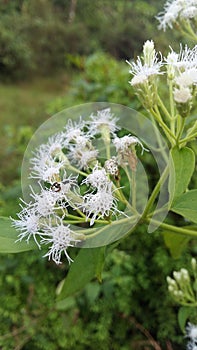- Price: 1$
- Size Facebook: 1702 x 630 px
- Size Twitter: 1500 x 500 px
- Size LinkedIn: 1128 x 191 px
More Facebook, Twitter and LinkedIn Cover Photos
Cover photo info
- Photo title: Exploring the Enchanting World of Ageratina Altissima: White Snakeroot and its Ecological Significance
- Author: Nipunmadusanka32
- Cover photo description:
- Ageratina altissima, commonly known as white snakeroot, is a perennial herbaceous plant that belongs to the Asteraceae family. It is native to North America and is widely distributed across the eastern and central regions of the United States and Canada. This plant is known for its clusters of small, white flowers and its ability to thrive in a variety of habitats, including woodlands, meadows, and prairies.White snakeroot typically grows to a height of 2 to 5 feet (60 to 150 centimeters) and has a bushy and upright growth habit. The stems are slender, often branching, and covered with fine hairs. The leaves are opposite, serrated, and lance-shaped, with prominent veins. They have a dark green color and emit a slightly unpleasant odor when crushed.During late summer and early fall, Ageratina altissima produces numerous small, white flowers that are arranged in flattened clusters or panicles at the ends of the stems. Each flower consists of tiny tubular florets that are surrounded by several white ray florets, creating a delicate and airy appearance. These flowers attract various pollinators, including bees, butterflies, and other insects, which aid in the plant's reproductive process.After pollination, the flowers give way to small, dry fruits called achenes, which are dispersed by the wind. This allows the plant to colonize new areas and contribute to its ability to spread across different habitats.While white snakeroot possesses a simple and unassuming beauty, it is important to note that it contains a toxic compound called tremetol. This compound can be harmful to livestock, particularly cattle, if ingested. The consumption of white snakeroot-contaminated forage by livestock can lead to a condition known as milk sickness, which can be fatal.Historically, white snakeroot gained notoriety due to its association with the death of Abraham Lincoln's mother, Nancy Hanks Lincoln, who is believed to have succumbed to milk sickness. This led to increased awareness of the plant's toxicity and efforts to mitigate its impact on livestock.Despite its toxic properties, Ageratina altissima also has medicinal uses. Some Native American tribes used the plant in traditional medicine for various ailments, including as a diuretic, an antirheumatic, and a treatment for snakebites.Overall, Ageratina altissima, or white snakeroot, is a resilient and adaptable plant that contributes to the ecological diversity of North American habitats. Its delicate white flowers and ability to attract pollinators make it a valuable component of natural landscapes, despite the caution necessary regarding its toxic properties.
- Image ID:271852983
- Views:0
- Downloads:0
Keywords for Facebook, Twitter and LinkedIn timeline photos
ageratina
altissima
asteraceaefamily
biodiversity
blossom
branch
ecologicaldiversity
evergreen
flower
food
grass
herb
insect
leaf
lilac
meadow
meadows
medicinaluses
milksickness
nativeflora
nature
naturelovers
northamericanplants
perennialherb
plant
pollinators
prairie
prairies
produce
shrub
toxicplant
tree
whitesnakeroot
wildflower
woodlands



